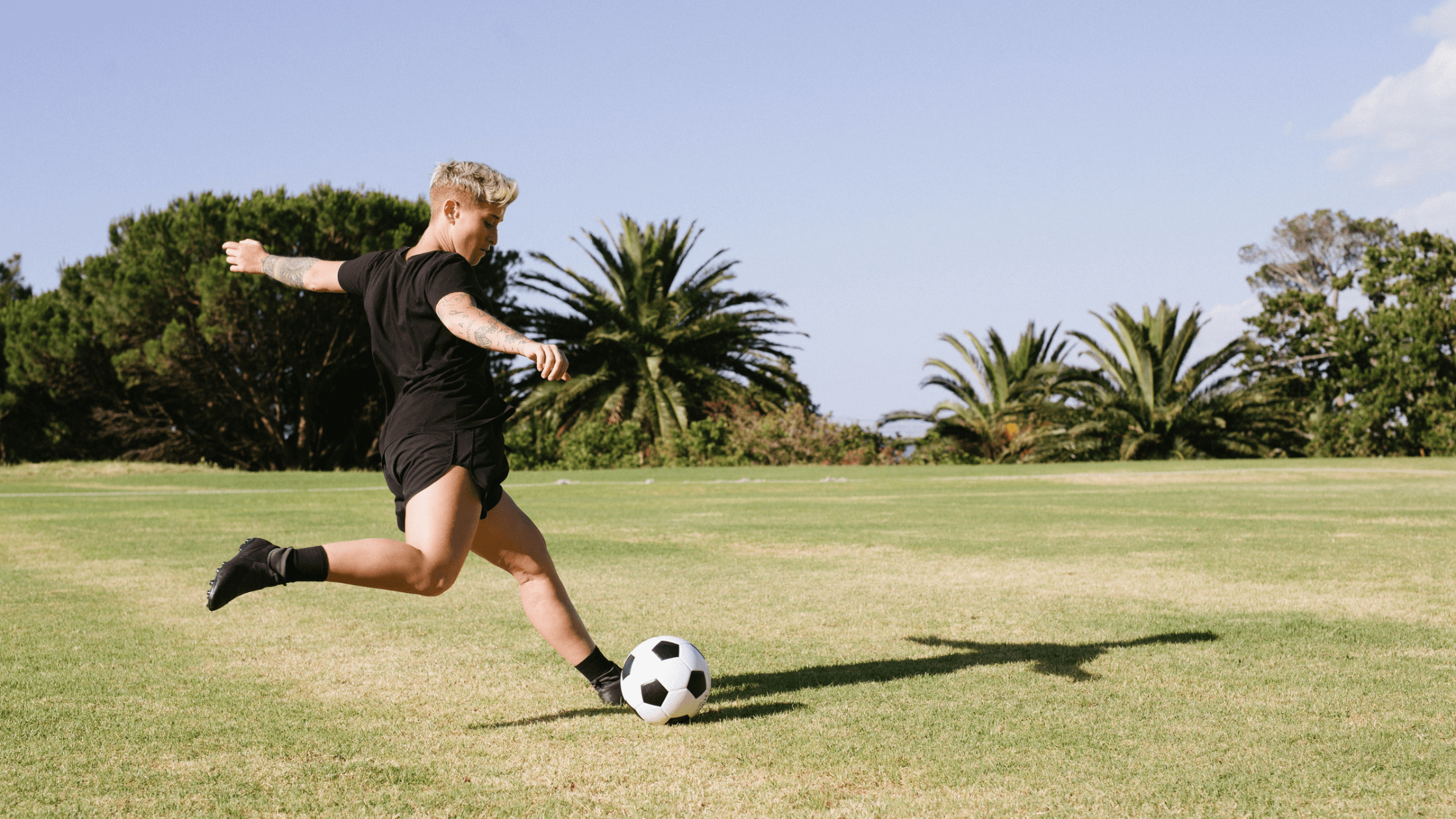How Can Physical Therapy Help Prevent Sports Injuries?

Physical Therapist, PT, DPT // EW Motion Therapy Trussville
Participating in sports is a fantastic way to stay active, develop skills, and foster a competitive spirit. However, sports-related injuries can damper the fun and potentially sideline athletes for extended periods. While accidents can happen, integrating physical therapy into sports training programs can be just as crucial in injury prevention as it is in rehab. We have worked with athletes from many different sports at EW Motion Therapy to help them prevent injury and improve performance. Even if you think our services do not fit your needs, you can still read on as we explore the significance of physical therapy in preventing sports injuries, how it differs from injury rehabilitation, and how physical therapists collaborate with athletic trainers and coaches for optimal athlete performance.
Injury prevention vs. rehabilitation
Before delving into injury prevention, it is essential to understand the distinction between injury prevention and injury rehabilitation. Physical therapy differs in its approach to preventing injuries versus rehabilitating injuries. Let's explore the critical differences between these two aspects:
Focus and goal
Injury Prevention: The primary focus of physical therapy in injury prevention is to identify and address risk factors and imbalances that could lead to injuries. The goal is to proactively enhance an athlete's physical condition, optimize movement patterns, and reduce the likelihood of injuries.
Injury Rehabilitation: In injury rehabilitation, physical therapy aims to restore function, mobility, and strength following an injury. The focus shifts to addressing the specific impairments resulting from the injury, promoting tissue healing, and helping the athlete regain their pre-injury level of activity and performance.
Timing
Injury Prevention: Physical therapy for injury prevention is typically implemented before any injury occurs, during pre-season or off-season periods, or as part of a proactive training program. It involves ongoing assessments, corrective exercises, and preventive strategies to minimize injury risk and enhance performance.
Injury Rehabilitation: Physical rehabilitation therapy can come into play at every stage of the healing process. Physical therapists can encourage faster recovery with decreased pain and swelling during the early phases, keep range of motion and strength throughout the body during the middle phases, and then increase activity back to the prior level in the later phases. They are the experts on modifying activities to protect an injury while maximizing and maintaining fitness.
Assessment and treatment
Injury Prevention: In injury prevention, physical therapists conduct comprehensive assessments to evaluate an athlete's overall physical condition, movement patterns, strength, flexibility, and biomechanics. The emphasis is on identifying potential weaknesses or imbalances that may predispose the athlete to injury. Treatment involves designing customized exercise programs, implementing preventive techniques, and providing education on injury prevention strategies.
Injury Rehabilitation: In injury rehabilitation, physical therapists assess the specific impairments resulting from the injury, such as limited range of motion, muscle weakness, or reduced joint stability. The focus is on targeted interventions to promote healing, restore function, and regain strength and mobility. Treatment may include therapeutic exercises, manual therapy techniques, pain management strategies, and advanced rehabilitation protocols.
Collaboration
Injury Prevention: Physical therapists work closely with athletic trainers and coaches in injury prevention. They collaborate to design comprehensive injury prevention programs, educate athletes on proper techniques and preventive measures, and monitor an athlete's progress. This collaboration ensures a holistic approach to injury prevention and performance optimization.
Injury Rehabilitation: During injury rehabilitation, physical therapists collaborate with physicians, orthopedic specialists, and other healthcare professionals involved in the athlete's care. They communicate and coordinate treatment plans, track progress, and adjust rehabilitation protocols. This interdisciplinary collaboration ensures a comprehensive and effective rehabilitation process.
While the focus and timing may differ, physical therapy is crucial in injury prevention and rehabilitation. By addressing weaknesses, imbalances, and movement dysfunctions, physical therapists contribute to the overall well-being and performance of athletes, whether it be by reducing the risk of injuries or facilitating a successful recovery from them.
Preventing sports injuries through physical therapy
Comprehensive assessments
Physical therapists are trained to conduct thorough assessments of an athlete's physical condition, identifying areas of weakness, imbalances, or faulty movement patterns that may predispose them to injuries. By evaluating an athlete's flexibility, strength, range of motion, and biomechanics, physical therapists can develop targeted interventions to enhance performance and prevent injuries.
Individualized exercise programs
Based on the assessment findings, physical therapists create tailored exercise programs that address an athlete's needs. These programs aim to improve muscular strength, flexibility, balance, coordination, and core stability. Physical therapy can significantly reduce the risk of sports injuries by targeting areas of weakness and enhancing functional movement patterns.
Injury prevention techniques
Physical therapists employ a wide array of techniques to prevent injuries. These may include:
- Dynamic warm-up and cool-down routines: Incorporating specific warm-up and cool-down activities enhances blood flow, increases muscle temperature, and improves joint mobility, reducing the risk of sprains, strains, and other injuries. The warm-up and cool-down are essential for preparing the tissues and restoring them post-exercise/activity.
- Neuromuscular training: This training improves an athlete's movement control and coordination. It involves exercises that enhance balance, proprioception (awareness of body position), and reaction time, which can help prevent injuries related to sudden movements or changing directions.
- Biomechanical analysis: Physical therapists assess an athlete's movements during sports-specific actions to identify any faulty mechanics that could contribute to injuries. You can significantly reduce the risk of injury by making corrections and implementing proper techniques.
- Equipment assessment: Physical therapists work closely with athletic trainers and coaches to ensure athletes have appropriate and properly fitting equipment, such as footwear and protective gear. Regularly checking gear helps minimize the risk of injuries related to inadequate support or improper equipment use.
Collaboration with athletic trainers and coaches
Physical therapists play a crucial role in collaborating with athletic trainers and coaches to promote injury prevention and enhance athletic performance. They work together to:
- Develop injury prevention programs: Physical therapists and athletic trainers create comprehensive programs considering an athlete's needs, sport-specific demands, and training goals. These programs may include strength and conditioning exercises, mobility drills, and sport-specific functional training.
- Educate athletes, coaches, and trainers: Physical therapists provide valuable education on injury prevention strategies, proper warm-up and cool-down techniques, recovery protocols, and injury management. They empower athletes, coaches, and trainers with the knowledge to make informed decisions and adopt preventive measures.
- Monitor and modify training programs: Physical therapists collaborate closely with athletic trainers and coaches to monitor athletes’ progress and adjust training programs. They help identify warning signs of overtraining or potential injury risk and implement appropriate modifications to optimize performance and reduce the likelihood of injuries.
Incorporating physical therapy into sports training programs can significantly reduce the risk of sports-related injuries. Physical therapists play a pivotal role in keeping athletes healthy and on top of their game by conducting comprehensive assessments, designing individualized exercise programs, and implementing injury prevention techniques. Collaboration with athletic trainers and coaches ensures a holistic approach to injury prevention, enabling athletes to perform at their best while minimizing the risk of harm. Remember, prevention is vital, and with a physical therapist’s guidance, athletes can enjoy their sports while maintaining optimal physical well-being, so they can see the results they want and feel confident in their performance. We consider it a privilege to be this guide for the athletes we treat at EW Motion Therapy. If you are curious about what else physical therapy can do for you, click the button below to download our answers to 20 frequently-asked physical therapy questions.


